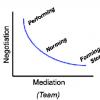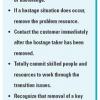|
|
Weekend Engagement In "Growing Your Career in Tough Times," Fiona Charles writes about some of the free and low-cost things testers can do for professional development when money isn't available for courses and conferences. In this column, she describes two examples of the amazing things some testers get up to on the weekend to practice their craft, develop their skills and knowledge, and have a great deal of fun.
|
|
 |
New Focus for Project Managers The jump from traditional software practices to agile can be daunting for some project managers. After all, agile teams are all about "self-organizing," right? What's a manager to do? Michele Sliger has encountered a fair number of worried project managers and, in this article, offers a more uplifting perspective.
|
|
|
|
The Boutique Tester As Matt Heusser sees it, the "war on work" that exchanged centuries of craftsmanship for being a small part of the big machine has itself been replaced in the past decade--at least in the software industry--with a revitalization of the craftsperson. What's more, he sees the realization of the "boutique developer" as a promising sign for the possibility of boutique testers.
|
|
|
|
What Aspiring Speakers Want to Know Becoming a competent and confident presenter takes practice, preparation, and persistence, but the effort is worth it in terms of the resulting credibility, clout, and career development potential. In this column, Naomi Karten addresses three of the questions she's often asked by people seeking to improve their presentation skills.
|
|
|
|
Testing Innocence Chris McMahon is a tester who likes to take a look at the code under the application's hood. Although he has heard that developers and testers alike argue that this makes for less effective testing, he is here to argue that reading and writing code is part of the testing craft and that the ability to read and write code in the service of testing is critically important for the professional tester.
|
|
 |
Rescuing a Captive Project Allowing an individual to hold a project hostage to his knowledge and expertise is bad for the project and for the team. Fiona Charles describes one captive project and shows how it could have been remedied.
|
|
|
|
Growing Your Career in Tough Times In these tough economic times, many testers can't access formal training. In this column, testing consultant Fiona Charles describes the wealth of low- or no-dollar resources available for professional development and invites readers to share their ideas.
|
|
|
|
Successful Teams are TDD Teams Test-Driven Development (TDD) is the practice of writing a test before writing code that implements the tested behavior, thus finding defects earlier. Rob Myers explains the two basic types of TDD: the original unit-level approach used mostly by developers, and the agile-inspired Acceptance-Test Driven Development (ATDD) which involves the entire team. Rob has experienced various difficulties in adopting TDD: developers who don't spend a few extra moments to look for and clean up a new bit of code duplication; inexperienced coaches who confuse the developer-style TDD with the team ATDD; and waffling over the use of TDD, which limits its effectiveness. The resistance (overt or subtle) to these practices that can help developers' succeed is deeply rooted in our brains and our cultures.
|
Rob Myers, Agile Institute
|
|
|
Ten Practices of High-Performance Teams With all the hype about agile, lean, CMMI®, and every other method du jour, we sometimes forget that our real goal is high performance. High-performance software teams consistently deliver products that delight their customers, all while remaining on schedule, keeping with agreed-to functionality, and maintaining high quality. These teams are proud of what they produce and are continuously improving the way they work. Over the past decade, Noopur Davis has worked with many high-performance teams in both large and small organizations. She has discovered that high-performance teams share a number of key practices, regardless of the process they use. Noopur shares these effective practices, including self-direction, openness and transparency, simplicity of work practices, focused use of data, an uncompromising commitment to quality, and others.
|
Noopur Davis, Davis Systems
|
|
|
Testing in Turbulent Projects Turbulent weather such as tornados is characterized by chaotic, random, and often surprising and powerful pattern changes. Similarly, turbulent software projects are characterized by chaotic, seemingly random project changes that happen unexpectedly and with force. Dealing with turbulence is about dealing with change. Testing teams must contend with continuously changing project requirements, design, team members, business goals, technologies, and organizational structures. Test managers and leaders should not just react to change; instead, they need to learn how to read the warning signs of coming change and seek to discover the source of impending changes. Rob Sabourin shares his experiences organizing projects for testing in highly turbulent situations. Learn how to identify context drivers and establish active context listeners in your organization.
|
Robert Sabourin, AmiBug.com Inc
|

